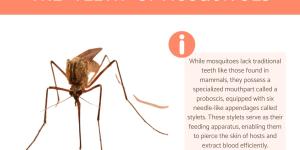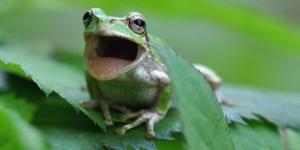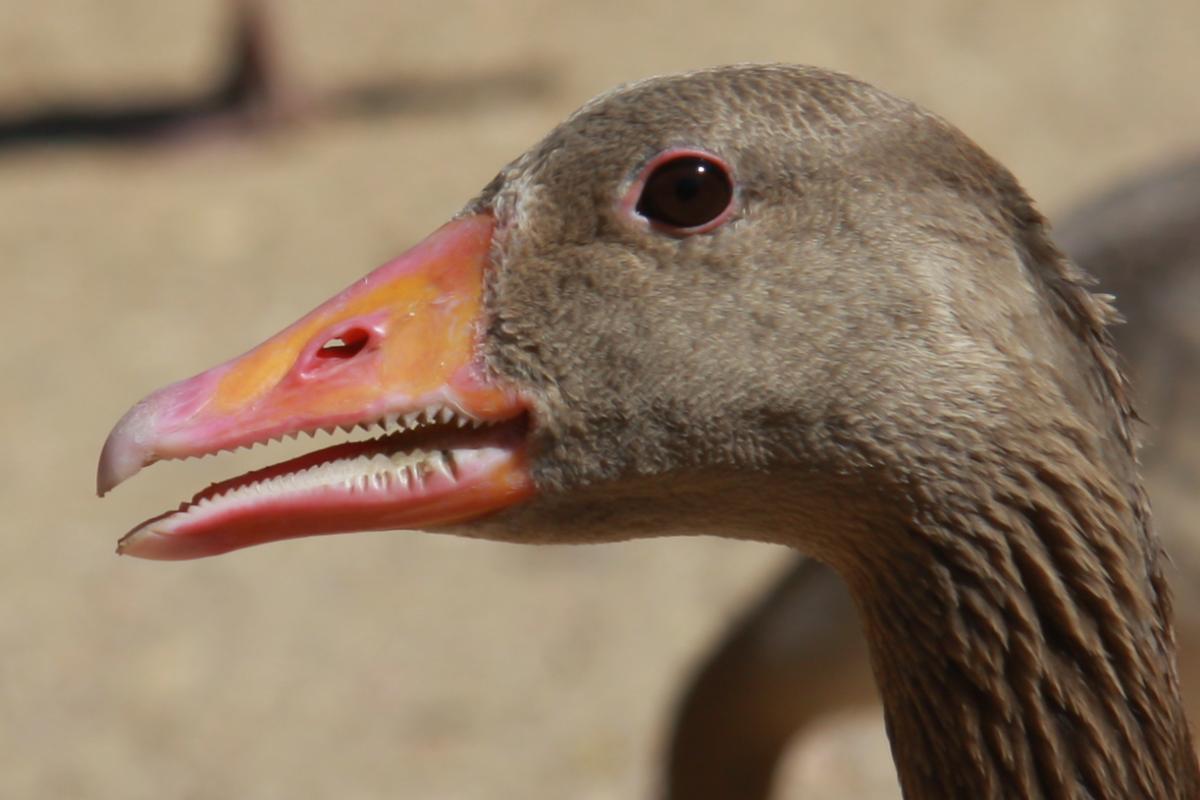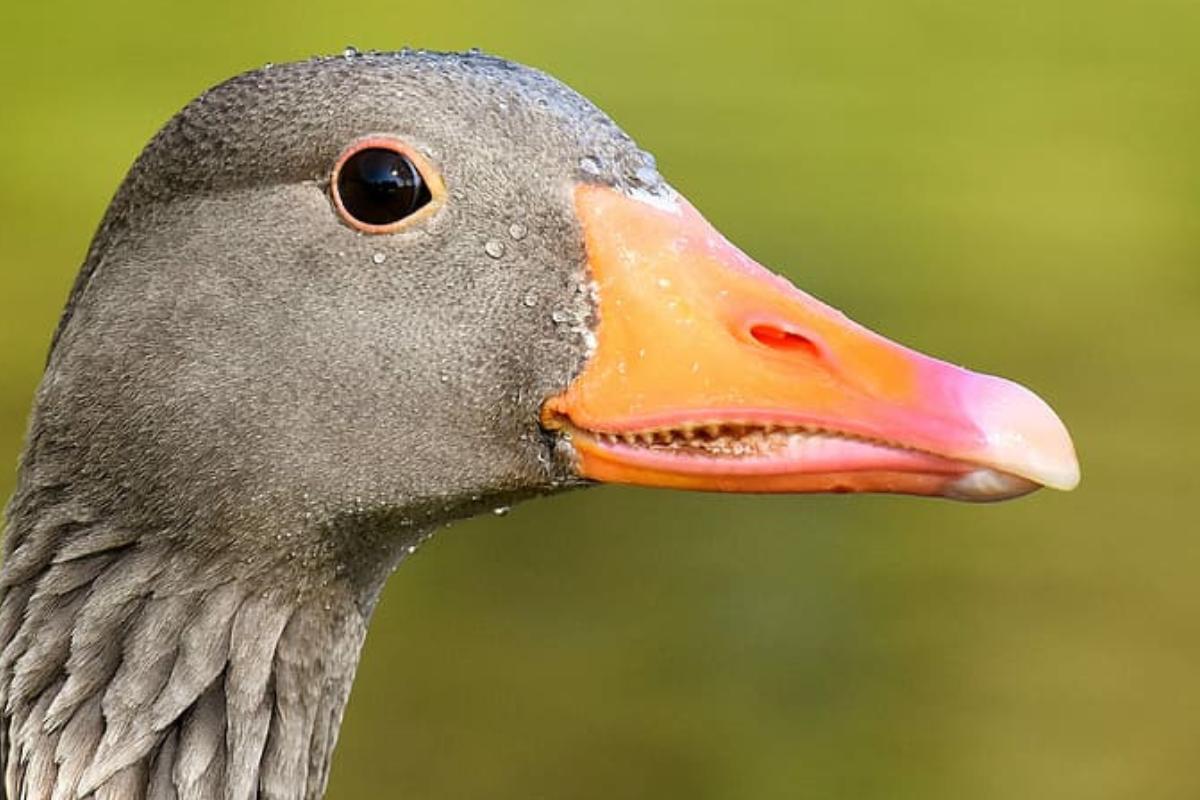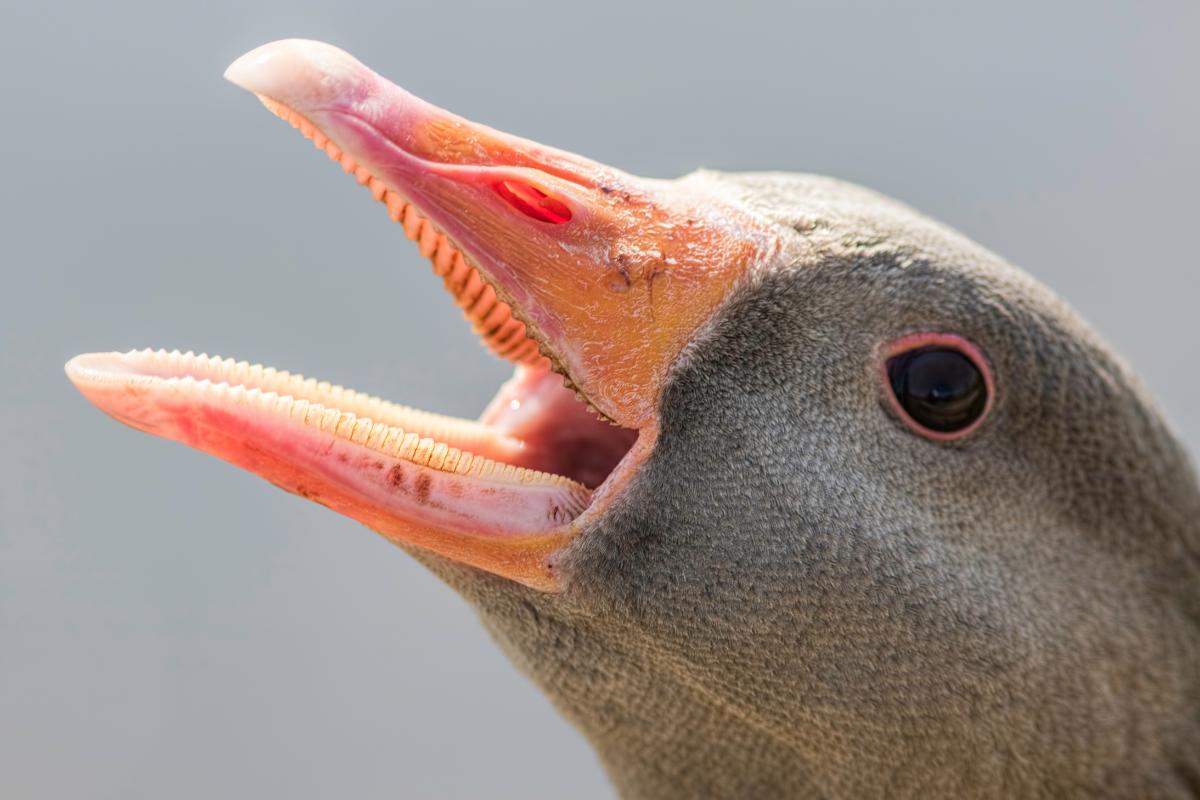Do Geese Have Teeth? - Goose Teeth

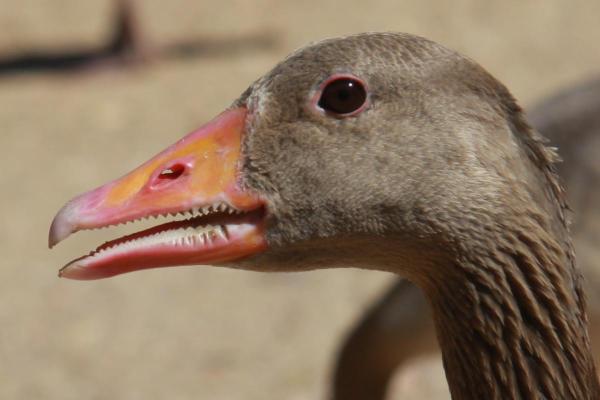
As with all birds, geese do not have teeth. This does not mean they don't have a little help when it comes to breaking down food for eating. Geese are part of the order Anseriformes, a taxonomic rank which also includes ducks, swans and other waterfowl. These animals feed on and around bodies of water. Through the various evolutionary processes they have experienced, animals have adapted physically in various ways. Diet is one of the most significant factors in determining these adaptations. Geese, ducks and other waterfowl don't have teeth, but they do have a complex digestive system which can process food in other ways.
At AnimalWised, we discover more with our article asking do geese have teeth? We discover more about goose teeth anatomy, as well as how they do manage to eat and survive.
Do geese have teeth?
As we have stated in the introduction, geese do not have teeth. This is surprising to some people who have seen geese. If we look closely at their bill, we can see spikey projections which resemble teeth. Rather than being individual teeth which sit in gums like our own, these projections are part of the goose's bill.
Goose bills are a part of their skull and made of bone[1]. Over this bone is a keratinized layer. Keratin is the same material from which hair, claws and other structures are formed. In birds, it is also the material from which feathers are made. This keratinized layer has small bumpy projections which resemble teeth. These are part of the two edges of the lower jaw and are known as tomia. The bumps themselves are known as lamellae.
Despite their similarity, these projections are not teeth. Teeth are not made from keratin. They are made of hard materials like enamel and dentin, as well as a soft inner pulp. Different types of teeth are used for tearing, chewing and generally breaking down food for better consumption. Geese do not eat in this way, so they do not need traditional teeth like other animals.
Having a lack of teeth doesn't mean a goose's beak isn't useful. They can also be very powerful, as anyone pecked hard by a goose can attest.
Do ducks have teeth?
Geese are a large member of the Anseriformes order. Ducks are another member of this order. Although smaller, they have various similarities in terms of morphology and behavior. Although they vary in color and pattern, they have similar quality plumage. They are both wading birds which live on and around bodies of water where they feed, reproduce and carry out all of their essential behaviors. Most duck and geese species can also fly well.
Another similarity between geese and ducks is the fact ducks also do not have teeth. They have the same serrated lamellae as have geese. The lamellae of certain duck species may not be as obvious as some geese. This is largely due to most duck species being smaller than geese. There are exceptions, but it is easier to see a goose's lamellae compared to those of a duck.
Learn more about the types of waterfowl with our article on the difference between geese, ducks and swans.
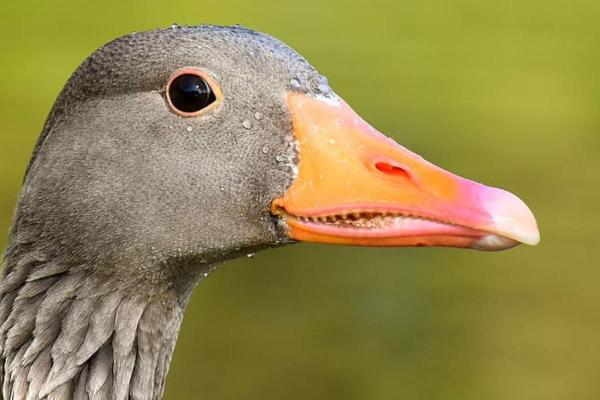
Why do geese not have teeth?
Birds are a group of vertebrate animals that are related to dinosaurs. In fact, birds are sometimes referred to as avian dinosaurs. This is due to the animals we know currently as birds being relatively close to dinosaurs in terms of evolution. It was previously believed by some ornithologists that modern birds lacked teeth because their added weight made flying more difficult. This hypothesis is now largely rejected.
Research now points to birds being toothless due to an ecological adaptation linked to their diet. Although the research is not conclusive, one recent report suggests that ecological factors may not be the only reason for the goose's lack of teeth[2]. Development seems to have had an important effect on whether or not birds kept their teeth during evolution.
The theory suggests that the time required to develop teeth was undesirable in bird species. Tooth formation slows developmental speed, so not developing teeth allows birds to have a shorter incubation period. This can have various benefits, especially to the parent birds. Such developmental strategies allow reproduction to take less time, being one small way they can better ensure the survival of their species.
Although the theory is not yet substantiated, it is likely one of the various reasons why geese do not have teeth. One of the most important is that they do not need teeth to eat the kind of food which provides their nutrition. Most geese are obligate herbivores[3], meaning they can only meet their nutritional needs from plant matter. They do not have the need to rip flesh from prey as types of carnivorous animals do. However, some may supplement their diet with insects or even small crustaceans.
We can better understand this by looking at the anatomy of geese teeth below.
Anatomy of the beak of geese
A goose's beak is also known as a bill. Although geese use their bill for many tasks, it is particularly important for their diet. The diet of geese is largely based on various plants, fruit and seeds. They can eat fish, insects, crustaceans or even amphibians on occasion. However, they do not need to do so to survive.
Geese, ducks and other types of waterfowl have lamellae on the side of their bill. These serrated parts of the tomia are useful for many reasons. Although we may think they act as teeth to chew food, they are more useful as a filtration system. These serrated parts of the goose's bill filter food from the water in which they swim. It allows them to take in food, but release the water so they don't have to swallow it.
Some goose and duck species may have larger lamellae than others. These species may be more inclined to eat fish than other animals. The longer projections mean they can better hold onto fish in the water. Some waterfowl will use the lamellae to dredge muddy areas at the bottom of a body of water. This allows them to eat certain aquatic foliage, as well as algae, mollusks and the larvae of insects and fish.
Although specially adapted to allow them to feed in water, a goose's beak also allows them to eat on land. They can eat various types of vegetation, as well as tubers, fruit and even small animals. The lamellae do not get in the way of terrestrial feeding. They can provide additional help when tearing leaves or other food.
Another adaptation of a goose's bill is the nail. This is a plate of hard tissue which is located on the tip of the beak. Different geese species will use it according to their dietary needs. It can allow them to dig out seeds from their husks or even be useful in dredging at the bottom of a lake. They are also believed to be useful as an additional sensory organ since they have various nerves around them.

Do geese chew their food?
Geese do not bite in the traditional way of animals with teeth. They can peck. This is a similar action which allows them to strike by closing their jaws together. They can rip off vegetation or snap up food from the water using this motion. They cannot bite in a way that predatory animals can and their beak is not a very useful defense mechanism.
Geese cannot chew. Whatever their food, they cannot chew it like other animals. To do so, they would require molar teeth which break down the food when chewing. The lamella cannot perform the same movements, nor do they have the same strength to break down food in this way. For this reason, geese generally tend to swallow their food whole. It is then broken down by their advanced and complicated digestive system.
Learn more about goose behavior with our article on why geese fly in a ‘V’ formation.
If you want to read similar articles to Do Geese Have Teeth? - Goose Teeth, we recommend you visit our Facts about the animal kingdom category.
1. Kim, J. M., & Choi, S. H. (2019). Osteogenic Evaluation of Goose-beak Bones According to Processing Temperature. In vivo (Athens, Greece), 33(2), 419–424.
https://doi.org/10.21873/invivo.11489
2. Yang, T. R., & Sander, P. M. (2018). The origin of the bird's beak: new insights from dinosaur incubation periods. Biology letters, 14(5), 20180090.
https://doi.org/10.1098/rsbl.2018.0090
3. Fox, A. D., Elmberg, J., Tombre, I. M., & Hessel, R. (2017). Agriculture and herbivorous waterfowl: a review of the scientific basis for improved management. Biological reviews of the Cambridge Philosophical Society, 92(2), 854–877.
https://doi.org/10.1111/brv.12258
- Howard, L. (2003). Anatidae. Retrieved from: https://animaldiversity.org/accounts/Anatidae/
- Vargas, S. (2002). Greylag goose. Animal Diversity Web. Retrieved from: https://animaldiversity.org/accounts/Anser_anser/


